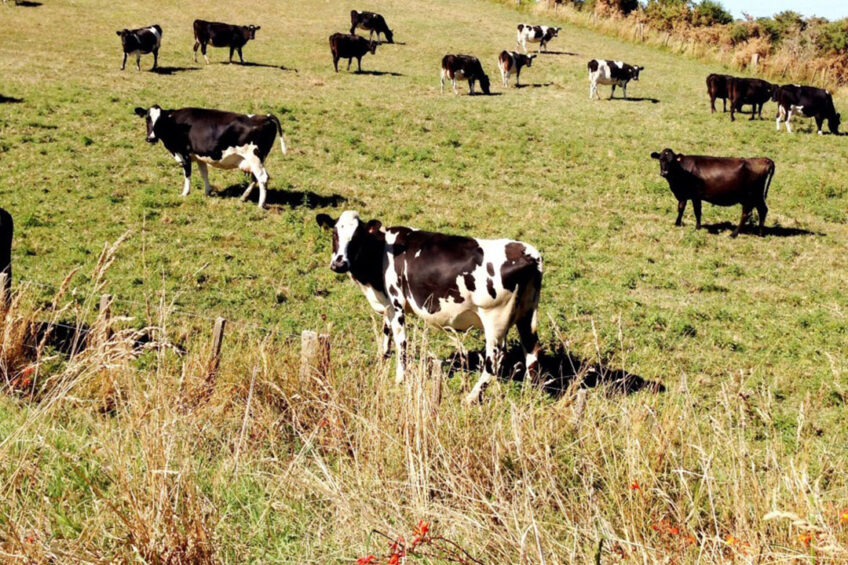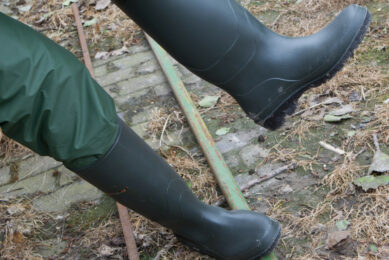Global wildfires and its effects on dairy cows

A new study conducted by researchers from the University of Idaho found that exposure to wildfire reduces milk production and alters the immune system of dairy cows.
Wildfires are becoming more intense and more frequent, ravaging communities and ecosystems across the globe. With global temperatures on the rise, the need to reduce wildfire risk is more critical than ever.
A landmark United Nations report has concluded that the risk of devastating wildfires around the world will surge in coming decades as climate change further intensifies what the report described as a “global wildfire crisis”.
In the USA, according to the United States Environmental Protection Agency, wildfires are particularly prevalent in the western United States, which is home to more than 2 million dairy cows that produce more than 25% of the nation’s milk. Recent EU data shows that wildfires have destroyed nearly 660,000 hectares of European land this year.
Wildfires emit fine particulate matter (PM2.5) in smoke, which is a known air toxin thought to contribute to morbidity in humans by inducing inflammation. An extensive body of literature has linked exposure to wildfire-derived PM to morbidity and mortality in humans; however, the effects of PM on dairy cattle are largely unknown.
The study
The researchers evaluated how exposure to high wildfire-derived particulate matter (PM2.5), alone or with elevated temperature-humidity index (THI), alters milk production and the immune system of lactating dairy cows. The study was conducted in 2020 at the University of Idaho Dairy Centre across the duration of the Pacific Northwest wildfire season (July to September). Cows were housed in open-air free-stall barns and exposed to wildfire-derived PM2.5 when both of the following conditions were met:
- daily (24-h) average PM2.5 concentration exceeded 35 µg/m3
- AirNow-Tech Navigator wildfire and PM2.5 maps in combination with HYSPLIT air mass trajectory mapping showed air plumes moving from areas with active wildfires to the study site.
Cow health
The study found that changes in blood chemistry and haematology associated with jointly increased THI and PM2.5 contribute to innate immune dysregulation, increasing susceptibility to disease and mortality.
Eosinophil and basophil counts were elevated with jointly increased THI and PM2.5, whereas red blood cell (RBC) and haemoglobin concentrations were lower when both THI and PM2.5 together were greater. Eosinophil and basophils are often associated with an allergic response in the body, suggesting that wildfire-derived PM2.5 may induce an allergic-type response in dairy cows.
“…we expect more wildfires in the years ahead.”
“The low RBC count and haemoglobin concentration could be attributable to increased haemolysis associated with stress or PM toxins. As haemoglobin is involved in the transport of oxygen and carbon dioxide in blood, reductions in haemoglobin abundance may also be associated with reduced tissue oxygenation and CO2 accumulation,” said the researchers.
“In our study, cows had elevated blood CO2 levels upon exposure to wildfire PM2.5. Elevated CO2 may result from slow, shallow breathing, increased CO2 production, and alveolar hypoventilation, and can indicate a primary compensation for metabolic alkalosis or respiratory acidosis. Alternatively, higher blood CO2 levels could be associated with greater atmospheric CO2 concentration from the wildfire combustion smoke,” they added.
Milk production and composition
The results of the study indicated that inhalation of wildfire PM2.5, independent of THI, impairs milk synthesis, possibly mediated by alterations in systemic macronutrient metabolism. The researchers said: “Our data indicate that, independent of THI, inhalation of PM2.5decreases daily milk production in dairy cows by an average of 1.2 kg/cow for every 100-µg/ m3 increase in PM2.5, not only on the day of exposure, but also up to 7 days after the last day of smoke exposure. Whereas milk protein content was 0.14% lower with every 100-µg/m3 increase in PM2.5 on the day of exposure.” fat percentage and lactose yield were also decreased by the simultaneous increases in THI and PM2.5.
It was concluded that “the mechanisms involved in PM effects on milk yield and composition are unclear but may be associated with impairment of mammary gland development or cellular turnover, or endocrine or metabolism disruption, as has been demonstrated for the toxic effects of other chemical compounds on a variety of tissues.”
Linking GHG emissions to wildfires
“As drought and heat continue with rising greenhouse gas emissions, we expect more wildfires in the years ahead, especially with the fire seasons getting longer,” said climate experts from the Environmental Defense Fund (EDF).
In a BBC report, Dr Friederike Otto, a senior lecturer in climate science at Imperial College London said, “There are basically 3 important ingredients for fires – high temperatures, dryness, and high wind.”
The EDF advised: “We have the power to break the cycle and get on track toward a more sustainable future. We can keep spending an ever-rising amount of money to address devastating fires and other weather disasters that climate change makes worse — or we can work together to slow and eventually stop the greenhouse gas emissions warming our planet.”
Join 13,000+ subscribers
Subscribe to our newsletter to stay updated about all the need-to-know content in the dairy sector, two times a week.










